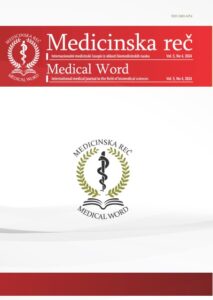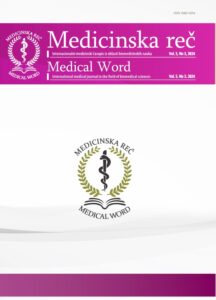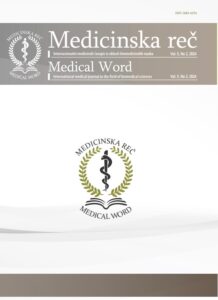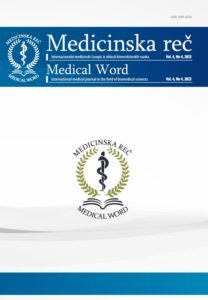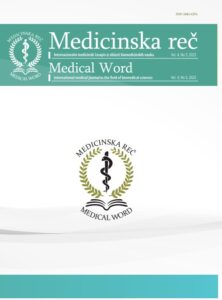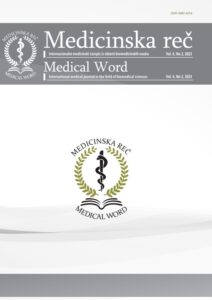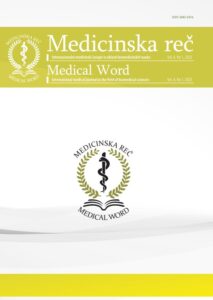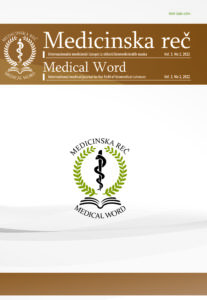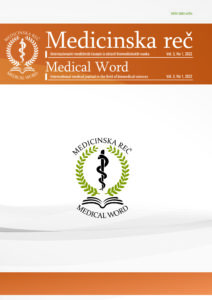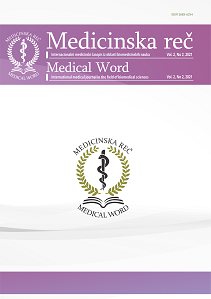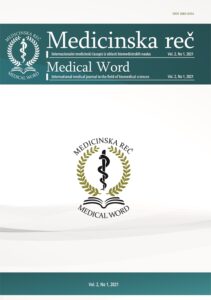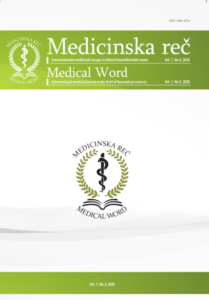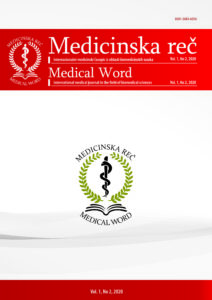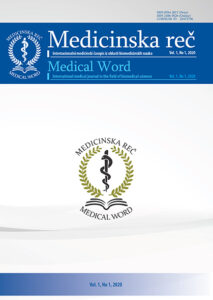Anatomsko-morfološke karakteristike acetabuluma
Pregledni rad
Marko Mladenović
80–82
https://doi.org/10.5937/medrec2203080M
Apstrakt
Acetabulum grade karlične kosti; sa glavom femura gradi zglob kuka koji predstavlja kariku između gornjeg dela tela i donjih ekstremiteta. Morfologija acetabuluma određuje kvalitet i funkciju zgloba kuka. Sve anatomsko-morfološke promene acetabuluma direktno utiču na razvoj mnogih bolesti zgloba kuka. Njegova anatomska građa i morfološka orijentacija igraju glavnu ulogu u prenosu težine tela preko butne kosti do stopala. Labrum acetabuluma ima ulogu da poveća površinu acetabuluma, da poveća njegovu dubinu, da smanji kontaktni stres i da prevenira direktan kontakt između hrskavice acetabuluma i glave femura.
Ključne reči: acetabulum, kuk, anatomija
rad4_080_082.pdf
Literatura
- Lazennec JY, Laudet CG, Guérin-Surville H, Roy-Camille R and Saillant G: Dynamic anatomy of the acetabulum: an experimental approach and surgical implications. Surg Radiol Anat. 1997; 19: 23-30.
- Toogood PA, Skalak A, Cooperman DR. Proximal femoral anatomy in the normal human population. Clin Orthop Relat Res. 2009; 464(4): 876-85.
- Shin, DS, Hwang SB, Park JS, Park HS, Lee S, Lee SB, Chung MS. Hip joint ligaments, a cadaver imaging study for education. Int J Morphol. 2014; 32(3): 822‒8.
- Jamali AA, Mladenov K, Meyer DC, Martinez A, Beck M, Ganz R, Leunig M. Anteroposterior pelvic radiographs to assess acetabular retroversion: high validity of the ”cross-over-sign”. J Orthop Res. 2007; 25: 758-65.
- Ganz R, Klaue K, Vinh TS, Mast JW. A new periacetabular osteotomy for the treatment of hip dysplasia: Technique and preliminary results. Clin Orthop Relat Res. 1988; 232: 26-36.
- Govsa F, Ozer MA, Ozgur Z. Morphologic features of the acetabulum. Arch Orthop Trauma Surg. 2005; 125: 453-61.
- Köhnlein W, Ganz R, Impellizzeri FM, Leunig M. Acetabular Morphology. Implications for Joint-preserving Surgery. Clin Orthop Relat Res. 2009; 467: 682-91.
- Murray DW. The definition and measurement of acetabular orientation. J Bone Joint Surg Br. 1993; 75: 228-32.
- Won YY, Chung IH, Chung NS, Song KH. Morphological study on the acetabular labrum. Yonsei Med J. 2003; 44: 855-62.
- Seldes RM, Tan V, Hunt J. Anatomy, histologic features, and vascularity of the adult acetabular labrum. Clin Orthop. 2001; 382: 232-40.
- Petersen W, Petersen F, Tillmann B. Structure and vascularization of the acetabular labrum with regard to the pathogenesis and healing of labral lesions. Arch Orthop Trauma Surg. 2003; 123: 283-88.
- Kim YT, Azuma H. The nerve endings of the acetabular labrum. Clin Orthop. 1995; 320: 176-81.
- Ferguson SJ, Bryant JT, Ganz R, Ito K. The influence of the acetabular labrum on hip cartilage consolidation:a poroelastic finite element model. J Biomech. 2000; 33: 953-60.
- Crawford MJ, Dy CJ, Alexander JW, Thompson M, Schroder SJ, Vega CE, Patel RV, Miller AR, McCarthy JC, Lowe WR and Noble PC. The Biomechanics of the hip labrum and the stability of the hip. Clin Orthop Relat Res. 2007; 465: 16-22.
- McCarthy JC, Noble PC, Schuck MR. The Otto E. Aufranc Award: The role of labral lesions to development of early degenerative hip disease. Clin Orthop. 2001; 393: 25-37.
- Peelle MW, Della Rocca GJ, Maloney WJ, Curry MC, Clohisy JC. Acetabular and femoral radiographic abnormalities associated with labral tears. Clin Orthop Relat Res. 2005; 441: 327-33.


